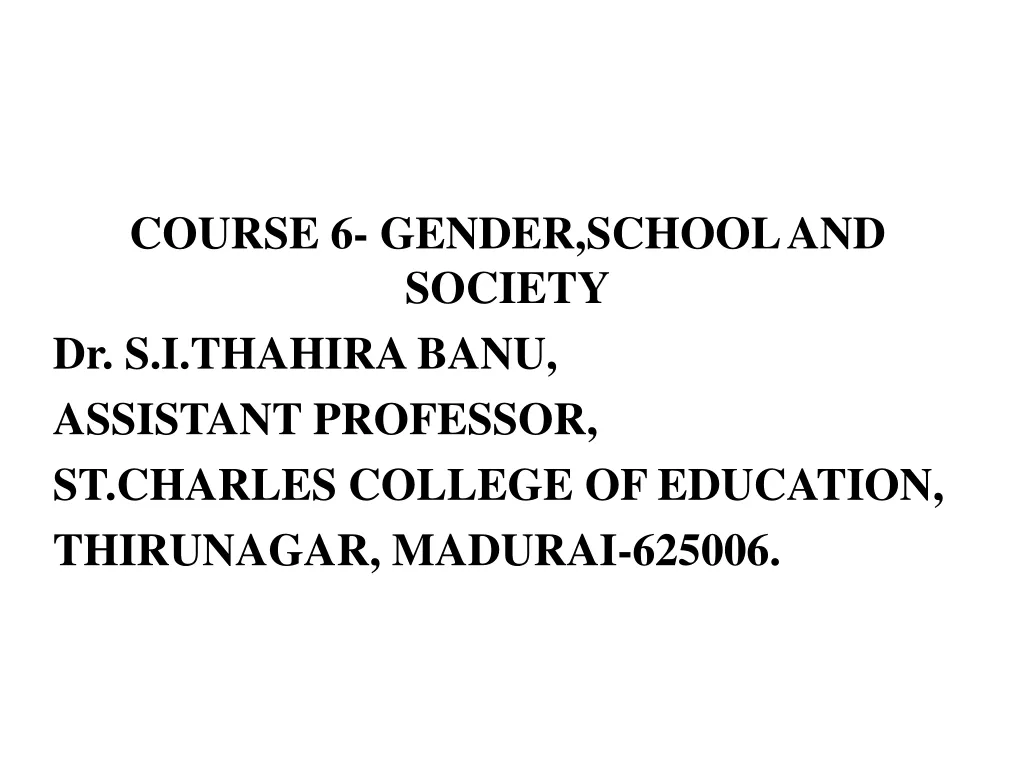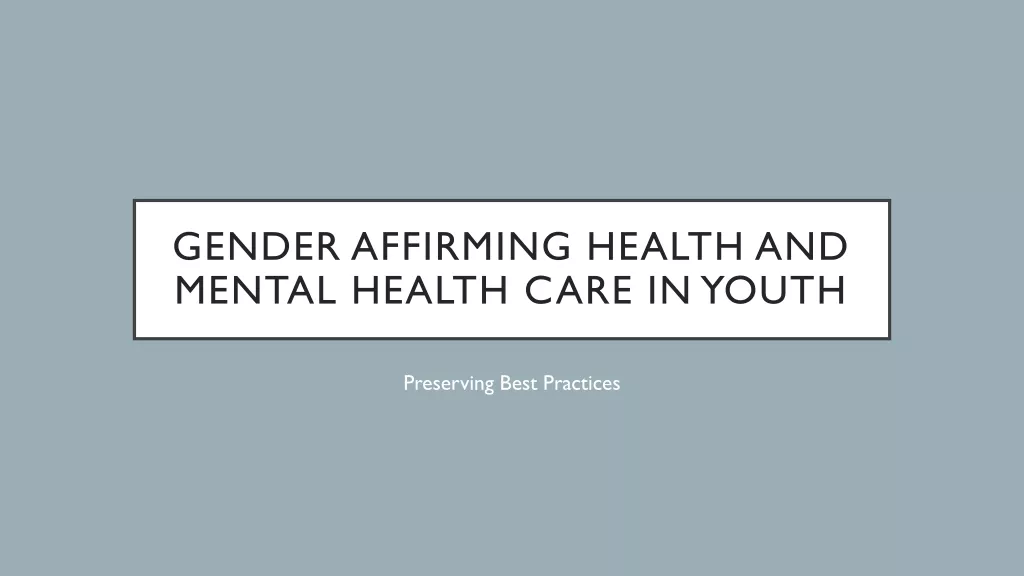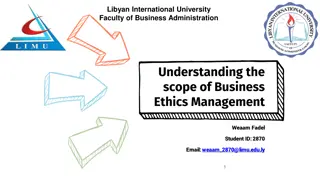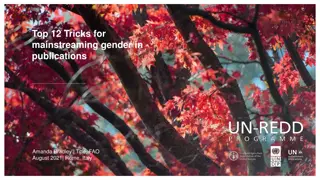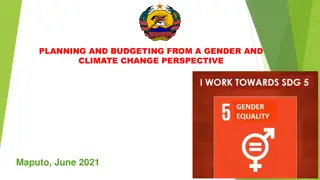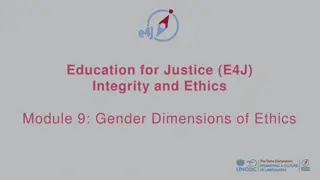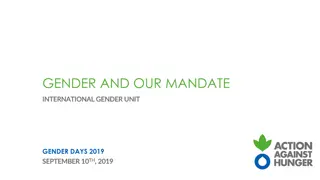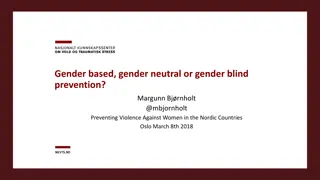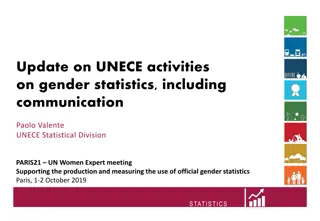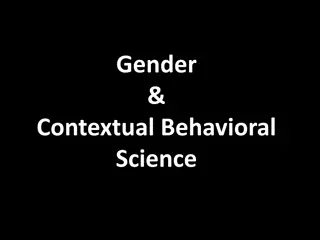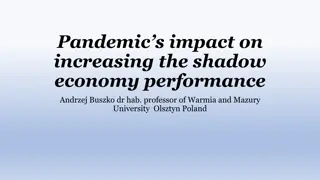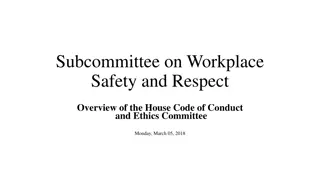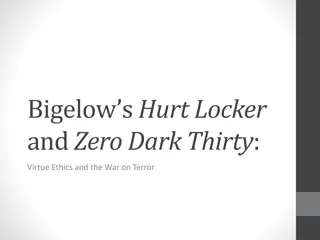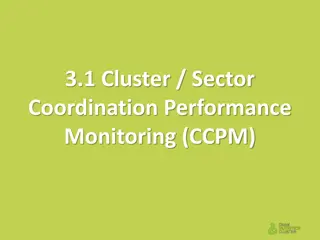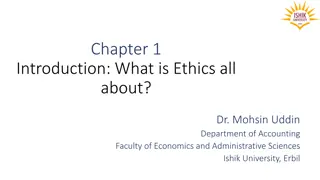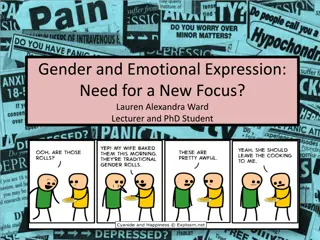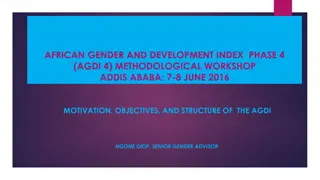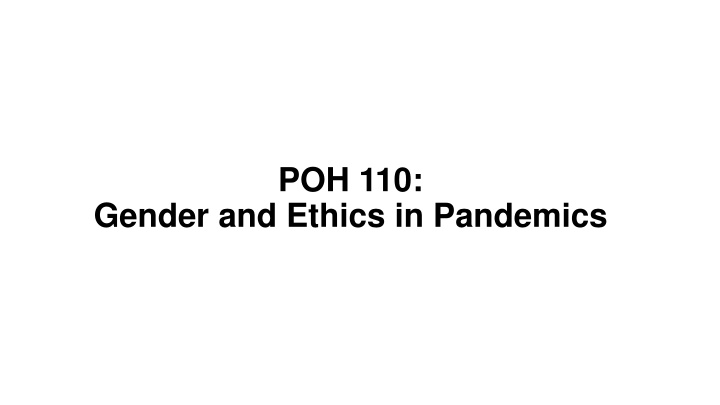
Gender and Ethics in Pandemics Course Dynamics
Delve into the dynamics of gender in outbreaks, epidemics, and pandemic response. Explore gender concepts, ethical considerations, and societal impacts on preparedness and response to disease outbreaks.
Download Presentation

Please find below an Image/Link to download the presentation.
The content on the website is provided AS IS for your information and personal use only. It may not be sold, licensed, or shared on other websites without obtaining consent from the author. If you encounter any issues during the download, it is possible that the publisher has removed the file from their server.
You are allowed to download the files provided on this website for personal or commercial use, subject to the condition that they are used lawfully. All files are the property of their respective owners.
The content on the website is provided AS IS for your information and personal use only. It may not be sold, licensed, or shared on other websites without obtaining consent from the author.
E N D
Presentation Transcript
POH 110: Gender and Ethics in Pandemics
Purpose This dynamics of gender in outbreaks, epidemics, pandemic preparedness and response course enables participants to integrate the
Objectives The objectives of this course are to learn: Various concepts of gender and sex Gender and disease preparedness Gender issues in pandemic response Ethical considerations in pandemic preparedness outbreak and pandemic
Expected Learning Outcomes By the end of this course participants should be able to Explain gender, sex, power relations and gender inequities in society and how they influence pandemics Discuss concepts of inequality and inequity with regard to preparedness and response for disease outbreaks Justify the case for mainstreaming gender and ethics in pandemics preparedness and response Assess the contribution pandemics response of ethical considerations in
Definitions and Concepts Sex refers to the biological and physiological factors that define males and females. Gender refers to the socially constructed roles, behaviors, activities, and attributes that appropriate for males and females. Gender differences include both socio-cultural factors as well as male-female differences in access and control over resources Gender differences include both socio-cultural factors as well as male-female differences in access and control over resources. Gender Stereotypes: existent societal connotations a given society considers
GENDER ROLES Productive work: This is work that produces goods and services for exchange in the market place (for income). Different genders contribute to family income with various forms of productive work, although men predominate in productive work, especially at the higher echelons of remuneration. Reproductive Work/Unpaid work: This work involves all the tasks associated with supporting and servicing the current and future workforce those who undertake or will undertake productive work. It includes child-bearing and nurture, but is not limited to these tasks. Socially reproductive activities include childcare, food preparation, care for the sick, and socialization of the young, attention to ritual and cultural activities through which the society s work ethic is transmitted, and the community sharing and support which is essential to the survival of economic stress. Community managing role: Activities undertaken primarily by women at the community level, as an extension of their reproductive role, to ensure the provision and maintenance of scarce resources of collective consumption, such as water, health care and education. This is unpaid work, undertaken in "free" time. Community politics role: Activities undertaken primarily by men at the community level, organizing at the formal political level, often within the framework of national politics. This is usually paid work, either directly or indirectly, through status and power.
Societal Responsibilities Role of family, other social institutions and women Women play as significant a role on socializing children Society generally values women less than men It is difficult to put pressure on the family to change traditions and cultural values Gender based inequality is often written in laws and policies Men are also constrained by construction of masculinity Fighting gender inequality is about challenging an ideology
Gender and Disease Outbreaks Women considered caring therefore tend to care for the sick - most likely to become infected Women spend a great deal of their time in the caring activities which involve feeding, cleaning, washing, preparing food. As a consequence, often women and young girls are less likely to be involved in political, educational, and professional activities
Effects of Gender on Outbreaks Gender influences the risk of acquiring infections during health care encounters (the role of caregiver mostly exposes women to an increased risks) Gender roles and access to resources affect exposure to animals and the risk of acquiring diseases from animals Implications of sex and gender for surveillance (Access to health information and services around the world is always hampered more for women and girls than for men and boys.)
Gender Issues in Pandemic Response There is need to consider gender equity issues in the development and implementation of pandemic response plans, given the demonstrated differences in the impacts both of the disease and of control measures on men, women, and non-binary individuals Most interventions are gender blind but should go a step further in making pandemic preparedness gender transformative. For example; -Integration of gender policies i.e. UN Gender Frameworks and Declarations -Include gender awareness and analysis for sensitive issues such as GBV and LBGTQIA -Conduct gender inclusive trainings for health workers and first responders
Gender Analysis in Infectious Diseases Why do Gender Analysis? Who does what? Who has what? Who decides? How? Who gains? Who loses? It is important to identify the Gender-related practices which increase the probability of men or women getting an infectious disease. Harmful practices can then be discouraged while helpful ones adopted. - -
WHO Framework for Sex and Gender and Emerging Infectious Diseases Skufca, J. and Arima, Y., Western Pacific Surveillance and Response Journal. Source: http://www.wpro.who.int/topics/gender_issues/Takingsexandgenderintoaccount.pdf
How Gender Differences Influence Emerging Infectious Diseases Vulnerability Exposure Response to infection Public health interventions gender differences vary from country to country Gender differences also vary within countries according to a host of socio-economic variables
Scenario: Planning Exercise for Participants Due to the existence of an outbreak of Ebola and Anthrax within the region, describe an appropriate gender related response responsibilities of the various members of society in your area. strategy and
Vulnerability To Infectious Diseases First contact Ebola, TB, anthrax Gender related norms Value of males against females Vaccination rates Risk factors: pastoralist communities and cholera outbreak Gender roles and responsibilities Schistosomiasis Guinea worm
Exposure to Pathogens Occupational exposure Hunters, gatherers, preparing meals Outdoor activities and rabies in Ethiopia Raw milk and TB among the Somali community Caring for sick/dead family members Child care and care takers Exposure in health care setting Exposure to livestock Slaughter and marketing
Gender and Ethics What is ethics? Systematic rules or principles governing right conduct. Each practitioner, upon entering a profession, is invested with the responsibility to adhere to the standards of ethical practice and conduct set by the profession. Principles of ethics - Understand Gender equality, gender equity, allocation and resource distribution, morality , vulnerability to disease etc. Gender bias, discrimination in relation to One Health
Practical and Strategic Needs Practical gender needs: Women and men can easily identify these needs as they often relate to living conditions. Women may identify safe water, food, health care, cash income, as immediate interests/needs that they must meet. Meeting women s practical gender needs is essential in order to improve living conditions, but in itself it will not change the prevailing disadvantaged (subordinate) position of women. It may in fact reinforce the gender division of labor. Strategic gender interests/needs: Strategic gender interests/needs are those that women themselves identify as due to their subordinate position to men in their society. They relate to issues of power and control, and to exploitation under the sexual division of labor.
Gender Analysis Concepts Practical Needs & and Strategic Gender Interests Condition and Position: In addition to the specific conditions which women share with men, differential access means women s position in relation to men must also be assessed when interventions are planned and implemented. Transforming Gender Relations Transformatory Potential Empowerment: Women s empowerment means developing their ability to collectively and individually take control over their own lives, identify their needs, set their own agendas and demand support from their communities and the state to see that their interests are responded to.
Exercise for Participants In your community, what do you see as the most serious issue facing women? How are the issues facing women different from those facing men? How do the issues change over a women s life cycle (e.g. infant, childhood, adolescence, child bearing, nursing, old age)? What is the impact of these challenges on women s health? How do women s health issues impact men? Do you know of any ethnic group in Uganda faced with an anthrax outbreak think back in the opening simulation: Would it be surprising if more women than men got TB? Why? How do men and women interact differently with domestic animals? With wildlife? What is the impact of deforestation on women?
Activity 1 Triple Role In your selected setting, complete the handouts identifying the productive, reproductive, community and political role carried out by men and women and discuss the vulnerability, exposure and response to disease outbreak as it affects men and women, the household and entire communities
Activity 2 Vulnerability to Risk Mapping Read the document about risks related to Ebola Map out the risks faced by different community members (women, men, children, medical personnel) Identify/ map out signs of those risks in the community Add resources that can be used to mitigate those risks to the maps in different colors Identify practical needs and strategic needs
Gender Communication Profile Provides information on how women and men access and share information It can be community driven having community members do it themselves Think specifically in terms of an outbreak like Ebola Who is providing information and how are they providing it- Key players Add any communication methods that you think are missing
Conclusion Confirm the participants understanding of: Gender relations, inequities in society and how they influence pandemics Concepts of inequality and inequity with regard to preparedness and response for disease outbreaks Case for mainstreaming gender in pandemics preparedness and response The contribution of ethical considerations in pandemics response
References www.un.org( UN gender framework) Caroline Moser, "Gender planning in the third world: Meeting practical and strategic gender needs". World Development. 17 (11): 1799 1825. 1989- 11-01. doi:10.1016/0305-750X(89)90201-5. ISSN 0305-750X. www.asset-scienceinsociety.eu https://www.who.int/gender-equity-rights/knowledge/9789241500111/en Porter, Fenella; Sweetman, Caroline (2005). Mainstreaming Gender in Development: A Critical Review. Oxfam. ISBN 9780855985516.
Review of The Pandemic Preparedness with One Health approach (PPOH) short course is by the East African Community (EAC) Secretariat in cooperation with universities of the six EAC Partner States. It is facilitated by the German Government and implemented by the Deutsche Gesellschaft f r Internationale Zusammenarbeit GIZ GmbH through the Global Programme Pandemic Prevention and Response, One Health (GP PPOH)

